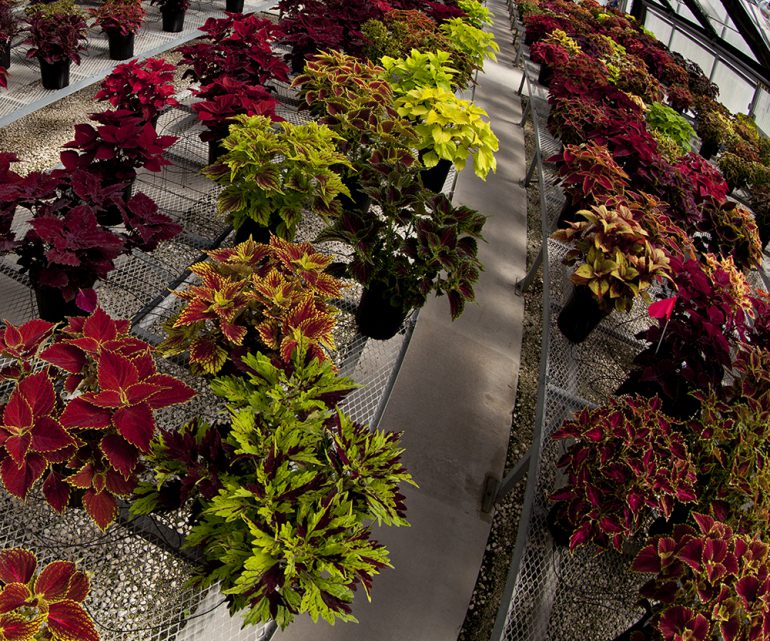A web-based irrigation system developed by researchers at the University of Florida Institute of Food and Agricultural Sciences saved 21 percent in water use without reducing growth of container-grown landscape plants, a new study shows.
While UF/IFAS scientists say a Virginia nursery is the only one utilizing the system so far, they hope similar businesses take advantage of the software, so they can reap its benefits in saved water and money. For now, scientists are interested in the irrigation needs of container-grown plants such as anise, gardenias, azaleas, junipers, roses and more.
UF/IFAS researchers worked with other UF scientists, the Virginia nursery and an automation technology company to develop the system, called the Container Irrigation Management program (CIRRIG). The weather-based system automatically provides daily irrigation run times for sprinkler-irrigated plants.
For the study, conducted at a nursery in Dunnellon, researchers integrated CIRRIG with a programmable logic controller (PLC) to automatically irrigate sweet viburnum in 10-inch diameter containers. The 24-week experiment showed water savings.
“The Virginia nursery that helped us develop and test CIRRIG has been using it to successfully control more than 200 irrigation valves,” said Jeff Million, a research associate in the UF/IFAS Department of Environmental Horticulture. “We are at the beginning stages of getting this technology out into the field. We have been getting a lot of interest, but only time will tell if the technology will be adopted by other nurseries including those in Florida.”
Scientists liken the PLC to a “switchboard” that can be programmed to accept output from CIRRIG through the Internet and then activate irrigation valves in the field. The PLC software used by CIRRIG is currently limited to a laptop or desktop, but it could eventually run on a mobile device, Million said.
“Our objective was to test out the ‘daily-adjustment’ technology in a nursery in Florida,” he said.
In general, the nurseries can save money from reduced pumping costs and increase revenue from growing plants they previously couldn’t grow well, Million said.
They can also reduce fertilizer, herbicide and pesticide use. Such businesses must pay to install the PLC-irrigation system and manage the CIRRIG program, but the Virginia nursery covered the cost of the irrigation system upgrade in the first year of the new system, Million said.
“Every nursery will be different but that is what the Virginia nursery observed,” he said.
Million worked on the study with UF/IFAS Department of Environmental Horticulture Professor Tom Yeager. The study is published in the journal HortTechnology and was supported by the Southwest Florida Water Management District and the Florida Nursery, Growers and Landscape Association.

